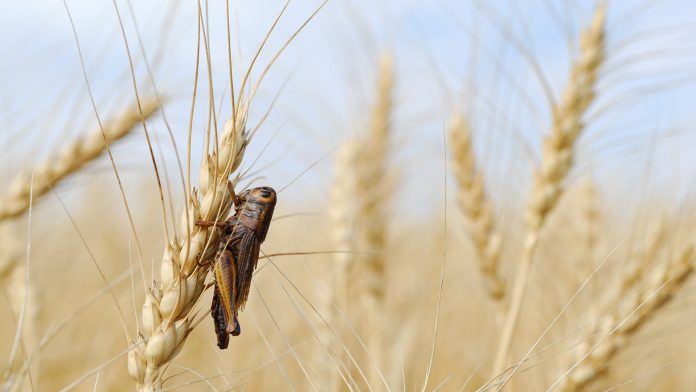Researchers have developed a novel compound solution – based on the odours released by predator insects – to repel herbivorous insects and protect crops.
At present, herbivorous insects represent a massive threat to farmers’ crop yields. The predator insects that feed off these herbivorous bugs release odours that the pests can sense. To avoid being eaten, this impacts the behaviour of the pests, right down to their physiology. With insects becoming more resilient to traditional pesticides, thus affecting the survival of crops and food security, it is imperative to develop methods to combat this problem.
Bottling the ‘smell of fear’ to protect crops from insects
Now, researchers have developed a method that has enabled them to bottle the ‘smell of fear’ produced by the predator bugs, which in turn, acts to repel and disrupt destructive insects without the use of stronger pesticides.
The researchers presented their findings this week at the fall meeting of the American Chemical Society (ACS). The work was presented by Jessica Kansman and Sara Hermann, who are both at Pennsylvania State University.
“It is not uncommon to use our senses to avoid risky situations. If a building was on fire, we as humans could use our senses of sight or smell to detect the threat,” explained Sara Hermann, the project’s primary investigator. “There is evidence for such behavioural responses to risk across taxa that suggest prey organisms can detect predation threats, but the mechanisms for detection aren’t very well understood, especially with insects.”
“Insects rely on olfactory cues to find food, mates and places to live, so this is a great opportunity to investigate how to use these smells to manipulate their behaviour,” added Jessica Kansman, the postdoc who presented the work at the meeting.
Aphids and ladybirds
Aphids are an extremely devastating pest to a wide assortment of crops, and their ability to transmit plant pathogens and increase resistance to insecticides means that they present a continual challenge for farmers. However, aphids are also the preferred food source for ladybirds, which both those in the farming industry, and amateur gardeners welcome as a source of sustainable pest management.
The research conducted by Hermann and her team has demonstrated that aphids and other herbivorous insects will avoid fields and gardens if they can smell predators in the vicinity. As well as this, exposure to the odour signals emitted by ladybirds can also result in aphids slowing down their reproduction rates and increase their ability to grow wings, both of which are behaviours that have evolved in order to prevent threats.
With the research findings in mind, they embarked on further research to determine if the olfactory signals emitted by the ladybirds could, by themselves, regulate pests. They began by pinpointing and removing the volatile odour profile from live ladybirds through the use of gas chromatography – which divides and enables detection of the individual compounds of the ladybirds’ smell.
Identifying the strongest compounds in the repelling odour
In order to identify which compounds the aphids would react to most strongly, they connected the antennae of live aphids to an electroantennogram (EAG) machine and subjected them to each individual odour the predator released to discover which compounds they detected. The intensity of their reactions was evaluated based on the signal picked up by the EAG machine. Of the various compounds radiated by ladybirds, aphids had the most visceral response to methoxypyrazines, including isopropyl methoxypyrazine, isobutyl methoxypyrazine, and sec-butyl methoxypyrazine. After the compounds were detected, the group set their sights on the development of a special odour blend that can be applied as part of an essential oil diffuser that is capable of spreading the scent over time across a garden or field.
Going forward, the team hopes to perform field tests using their scent diffusers in order to see if the impact on aphids and ladybirds in their natural environments are comparable to what they recorded in the lab.
As well as this, Hermann and Kansman want to ascertain whether the distribution area of the diffusers, and if it was possible to apply the same method to other pests, predators, and various types of crops. On top of this, they are working alongside a production company to design special diffusers for eventual commercial use by both farmers and gardeners.





